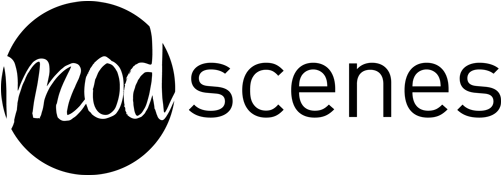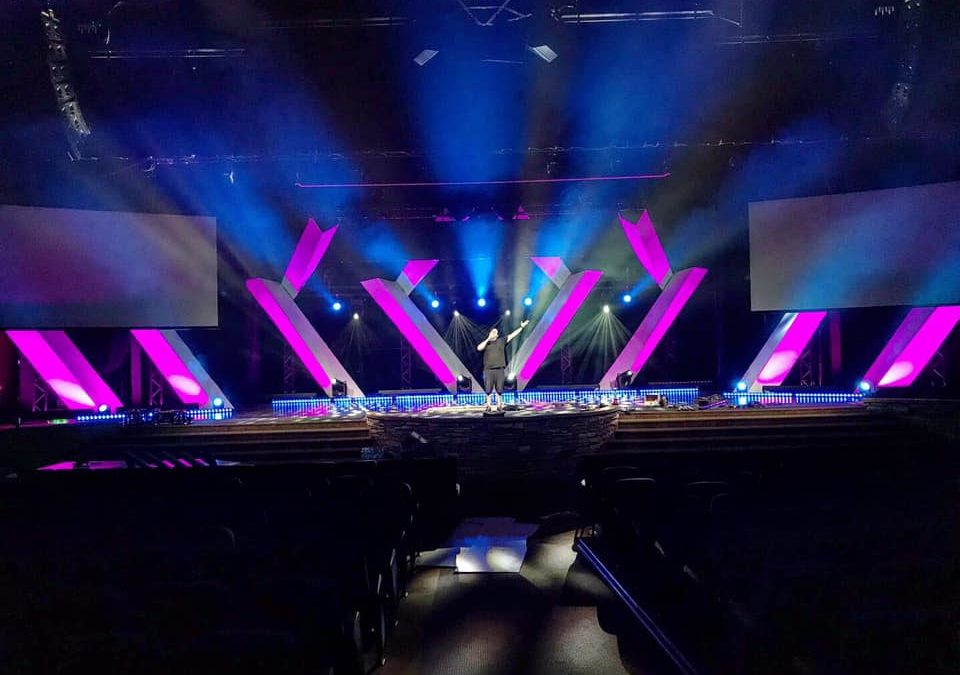Welcome to another thrilling episode of the Mod Scenes podcast. This is episode 1 42 and you’re here with Steven. So I’m the owner of Mod Scene and I love serving awesome people like you creating stage backdrops and serving, uh, event companies and B churches and, uh, just creating great things with stage rock traps, uh, and towers and, uh, DMX voice and, uh, all kinds of stuff. So, uh, today I want to actually talk about design, uh, in particular about, uh, where I get some of my inspiration for my designs. So, uh, if you’ve had a look through our catalog, I’m sure you can see, we have tons of different modular designs that look really great. They’re really flexible. So you can actually use them in multiple different ways, uh, which maximizes, sure. Uh, return on investment, um, in general, I think they look really awesome. So, uh, uh, again, I know I’m biased, uh, but you would, I mean, you have to be biased to, you have to be able to love what you do.
So, um, so, and it is something I do. I do. I love, I love creating, I love, uh, making cool stage backdrops and stage designs and tower designs, uh, cool things. So, uh, so jumping into the, uh, or further into, I should say the, the, my design inspiration. So, uh, a lot of times I find my design inspiration and, uh, a combination of things. So, uh, for example, uh, I’ll give you one that we actually, I found, uh, kind of Dunkin Oklahoma. So this is a new design panel, uh, that I’m working on. Uh, it’s called the terracotta. Uh, it’s not finished yet, but it is, uh, I actually found it’s a old textured brick pattern, uh, on a, uh, on a funeral home I’m in Duncan, Oklahoma. So middle of nowhere, uh, even more middle of nowhere in Oklahoma city. Uh, so, uh, so this, uh, this funeral, and it has this really cool, uh, textured pattern.
And so I wanted to, uh, kind of take that and turn that into a, uh, cut design so that we could use it with our modular stage backdrops pieces. So, uh, it’s a little bit difficult whenever it’s something texture like that, because you can’t actually communicate that texture as well on a broad scale. Uh, so say like you’re across, you know, 40 feet, um, you have to have really big texture. So what I’m actually going to do with this and is I’m going to do a cut instead of a texture because texture takes a lot more time to be facture. Uh, and there’s a lot more consistencies with it. Uh, and it’s a lot harder to clean for the client and for us as we check in and check out the product. Um, so I want to make sure that it’s as easy as possible to use.
So I’m going to turn, uh, to take different segments of that and make different types of cuts, uh, to create a texture, uh, that looks like a segmented terracotta peas. Uh, but when I do that, I’m going to actually make a little bit of a change to it. So I won’t use the original, uh, the original design cause it doesn’t repeat very much. So I’m actually going to take, and I’m going to repeat that design, uh, repeat that design up into the upper left-hand corner. So what this allowed me to do is whenever I’m using the stage design as a, uh, using the stage design and in use, you can rotate or flip the panels, um, on the edges and be able to create a new look by rotating it. So instead of a, the same texture over and over and over again, uh, the texture will be, um, will originate from one corner and work towards the other.
So as you flip it, uh, you’re going to get different looks, whether it be all the corners are together or all the corners are apart. Um, and it gives just a whole nother, uh, element to, to what you’re doing with, uh, with those stage side pieces. Uh, another place I see, I get, uh, I get, uh, I get additional, uh, inspiration is from mistakes. So, uh, there’ll be times, you know, and obviously I’m not perfect and I’ll be Sarah, be Ryan, I’ll be running the CNC and, uh, all miss cut something or the materials slide and kind of make a, uh, say if I haven’t, if I haven’t turned the vacuum on correctly or not clean the bed correctly. And the, the material slides a little bit, uh, it’ll create a different look. And so I try to make sure that every mistake I make, I learn from it, uh, and sometimes that learning is, uh, um, as finding a new design.
So, uh, just recently we actually had some scrap, we were cutting and, uh, the design didn’t work the way that I want it to. We had some scrap we’re trying to cut some designs into, and the scrap was ended up being just a little bit too small and it looked like it worked, but it wasn’t. Uh, but whenever it cut everything, it made a new, uh, it made a new pattern because of the biscuit. Uh, and so now that’s actually, we’re going to turn that into a projection screen design, which will be coming out later this fall. Um, so yeah. Uh, let’s see, what else? Uh, so also fine, uh, inspiration in nature. Uh, nature is obviously a great inspiration beat. Some of the best gobos you’ve ever seen are, you know, nice full leaf breakups. Uh, so we’re like fruit, like frozen rain, the frozen, but I was like one of my favorites.
It’s like beautiful. Uh, so yeah, so I really love, uh, looking at nature and finding stuff from that. And in particular, uh, one of the places I really love to look, uh, is the Southwest. There’s tons of really cool stuff out there. Uh, it gives me a lot of inspiration for, uh, uh, panels and even just to create, because, uh, when you’re inspired to create, you’re going to make mistakes and you’re going to find stuff that’s really good. Uh, so, uh, another way is I’ll look at simple shapes, uh, and the combination of multiple simple shapes to create a more complex shape. Um, that’s a, that’s a big way that I do a lot of our panels. That’s how I came up with the Crescent moon panels. Uh, and the samurai panels is, uh, the samurai actually started as a bunch of circles, uh, that we cut into panels, uh, and that we ended up, uh, cutting off one corner.
Uh, well, this this’ll be really cool if we rotate it and flip it, uh, make it into a continuous piece. So, uh, so yeah, that’s another way I find inspiration. Um, also my son Dorian, he helps me with his inspiration occasionally the other day. He, uh, convinced me to cut a, a velociraptor, a velociraptor panel. So that was pretty cool. Uh, um, so yeah, so I, I hope that, uh, it gives you a little bit of an insight in my design, uh, my design process. Uh, I really do love creating great things. I’d love to create something great for you. So, uh, if you have a stage backdrops that we can help with, uh, whether it be for your church, your next special event, we’d love to help you with on a stage backdrops and create something that really, uh, is unique to you. Um, so don’t hesitate to reach out.
You can reach us via phone at (530) 723-6421, or be an email at Steven modscenes.com. And obviously you can look at our, uh, website, uh, modscenes.com, uh, and specifically the creations page, which is mazzi.com/creations. There you’ll find tons of information about, uh, our, our custom products about some of the stuff we’ve created and, uh, see obviously a lot of the, uh, cool designs that we’ve created for stage backdrops. So, uh, I hope this has been a great podcast that your mind is filled with awesome design stuff from this podcast. And I would really love to, uh, know if there’s a way I can serve you again. Don’t hesitate to reach out to us and I’m looking forward to chatting with you soon.


Recent Comments